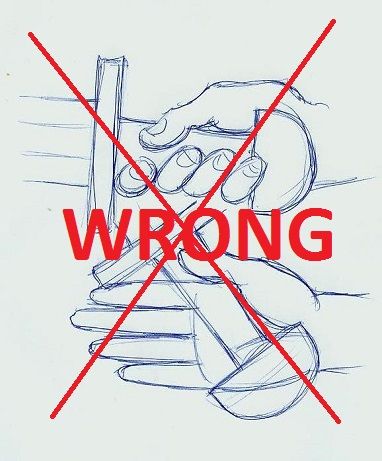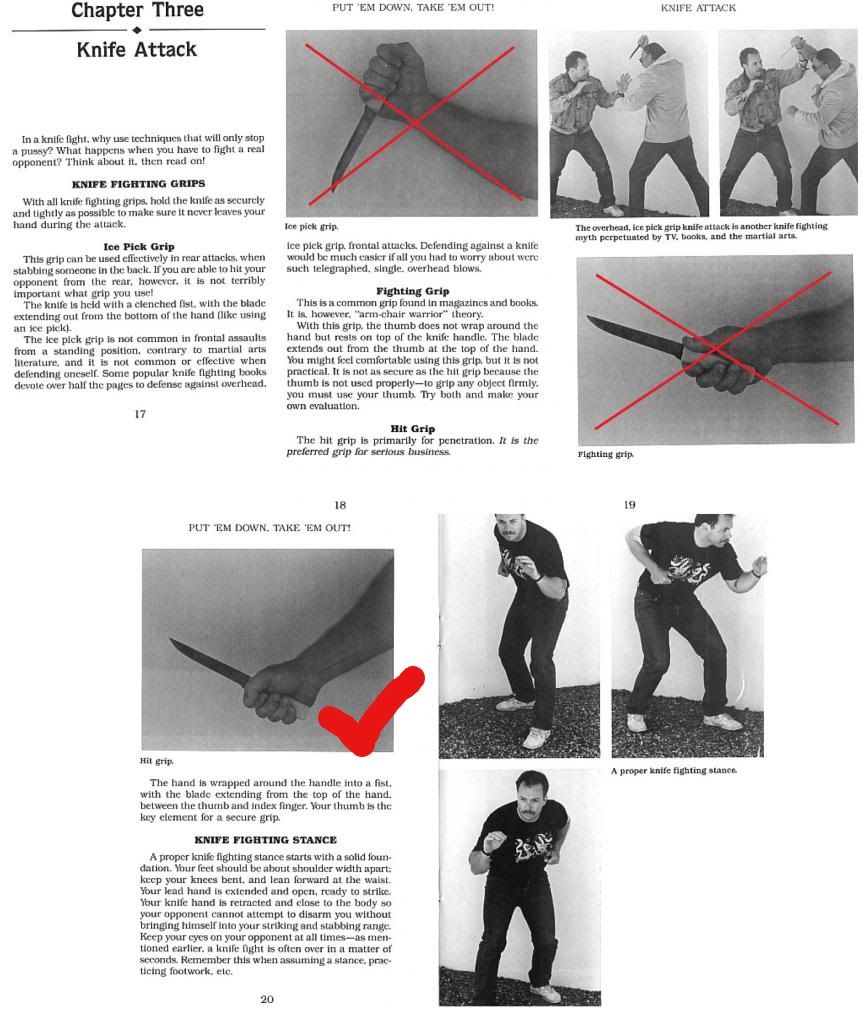How to Hold a Sword & Why the ‘Handshake Grip’ is Nonsense
Jun 26, 2013 12:13:47 GMT
Post by Jack Loomes on Jun 26, 2013 12:13:47 GMT

An Assyrian holding a sword correctly. 9th–8th century B.C. Source: Link
Doing the rounds of the sword forums is a nonsensical grip called the handshake grip. It appears to have been first proposed by sword maker Peter John55on on MyPalmery in 2004. Subsequently many forumites have sycophantically posted in support of it, often using spurious historical ‘evidence’ that purports to demonstrate that this modern and ridiculous idea was used by fighters in the Medieval Period. This could not be more wrong.
This is the drawing by Peter that started what is now passed off by inexperienced pseudo-historians as knowledge:

*Note that some much needed corrections have been made to the image above.
So where did this come from? I believe Peter created the grip, which he himself has no historical evidence to support but rather puts forward purely as conjecture, to allow for a grip that didn’t require substantial strength. Viking Swords such as those in the picture on the other hand require great strength on the behalf of the user to hold properly. The kind of strength that is hardly unachievable, but which today’s frequently sedentary lifestyle would not otherwise require. So to account for what Peter sees as just too difficult to believe, he proposed something so ridiculous it has to be seen to be believed.
And it wouldn’t have been believed, except that it was proposed by the designer of Al8ion Swords, and for some reason this made the armchair experts swallow it whole. It was then enshrined by Nathan Robin5on and Chad Arn0w of MyPalmery, and Paul 5outhren of Sword Loser's Guide.
The idea is easily identifiable as wrong, and there is one good reason why: the handshake grip doesn’t provide a secure grip. It allows one’s wrist to be highly mobile, but the wrist is the weakest mechanism of the arm, and should move the least. Movement should flow from the body and the arm, with the wrist essentially locked in place.
Note that every picture of a historical nature that has been used to bolster the argument for the handshake grip shows an arm fully extended forward.
Here below is a Byzantine Warrior with a Paramerion, the very type of sword modern sword enthusiasts often insist is perfectly suited to the ‘handshake grip’. Note that his fist is instead solidly locked around the grip with thumb correctly tucked in.

& this example:

In short, the handshake grip is a modern idea, and a terrible one at that.
There are thousands of depictions of correct grips in medieval and antique imagery. There are none of the so called ‘handshake grip’ or anything like it before the renaissance, and even those examples are debatable.
So who in this modern age can we rely upon for reasonable advice? Who actually uses sharp edged weapons in a combat context these days? Simple: criminals and soldiers. Everyone else is a theorist. Doers are the best source of accurate knowledge, not people who sit around merely thinking about combat with sharps.
An expert witness in this argument is Don Pentecost, author of Put ‘Em Down, Take ‘Em Out: Knife Fighting Lessons from Folsom Prison. Rather than paraphrase the man I provide here a direct excerpt from a man who really knows what he is talking about, who has been in knife fights in a life or death situation, a man who has no interest in convolution. His words apply doubly for swords, which are heavier and require a firm grip as much or more than knives. He discusses various grips that are often proposed and then finishes with the correct grip and why it is vastly superior:

Don hit the nail on the head: “…why use techniques that will only stop a pussy?”
A full version of Don Pentecost’s Put ‘Em Down Take ‘Em Out: Knife Fighting Lessons from Folsom Prison is available here:
www.academyofselfdefence.co.uk/wp-content/uploads/2011/02/Put-Em-Down-Take-Em-Out-Knife-Fighting-Pentecost-Don.pdf
It has come to my attention that this article above has hurt alot of egos out there which is a sad reflection of how far modern swordsmanship has gone in the wrong direction. It would be laughable if there were not throngs of keen young swordsmen out there thinking they know what they are doing but being misled by a few wrong headed individuals. The principles of bio-mechanics are universal, and the fact that our thumbs are intended to oppose our fingers is not a matter of debate. If you know how to handle a sword properly you will have no problem thrusting correctly with a proper grip.
This brings me to another important point that George Silver made convincingly in 1599 and yet so few modern sword students have actually bothered to read his works through - for posterity here are both of his works on this very site:
The Paradoxes of Defense by George Silver Englishman 1599
Brief Instructions on My Paradoxes of Defense by George Silver
Mr. Silver's point being that fencing is a flawed art. Indeed it is fencing which I believe marked the turning point of swordsmanship. Fortunately however the turn was not omnidirectional but was instead forked. On the one hand proper sword fighting continued to be taught an practiced, the kind of no frills fighting championed by George Silver. On the other flashy 'masters' of fencing emerged en masse from Italy and Germany teaching flawed civilian dueling and other tangents to true sword fighting of limited practical value.
It is defense i.e. the correct ancestral European way of fighting which is true and proper. Learning to duel as taught by Italian renaissance fencers is sport and a source of enjoyment for some, but in terms of its martial value it is foolishness. I mention this because people have argued to me "the hammer grip doesn't allow for lunging thrusts". If you practice properly you can perform excellent thrusts without over committing, is this not exactly what the Ancient Romans did? If you do not over commit you can change your attack, go to guard or withdraw. If you do over commit you are locked into a course of action that will take time to recover from. Over extending yourself as the Italian renaissance fencers do leaves one incredibly vulnerable, you should never throw yourself around like that - you're more likely to have your arm chopped off in a duel or have your sword taken from you in a fight than for the lunge to have the desired effect, furthermore as George Silver so diligently pointed out a single thrust even if landed often does not result in enough stopping power to result in a duel that results in mutual death - Mr. Silver demonstrates beyond question that this is why a shield, or at very least the proper use of the second hand is so incredibly important to one's survival in combat - and that a dagger is an imperfect implement for blocking, though Italian fencing 'masters' would like you to believe otherwise.
I challenged the sword community to give proof of the "handshake grip" and short of modern european examples not one example has been provided to me. This is because an idea like the "handshake grip" could only be floated in an age when sword play is more often sport than a matter of life and death.
To put faith in the "handshake grip" is to:
1. Contradict fundamentals of biomechanics
2. Expose oneself and others to the dangers of an insecure grip
3. Engage in foolishness[/div]
Lastly, it's not unusual for people to complain online that about Viking Swords that "The guard kept biting into my fingers without a glove on." Link
Well the long and short of it is that these people need to strengthen their wrists using exercises: Link
but also they need to take the advice of Ronnie Johns:

.png?width=1920&height=1080&fit=bounds)